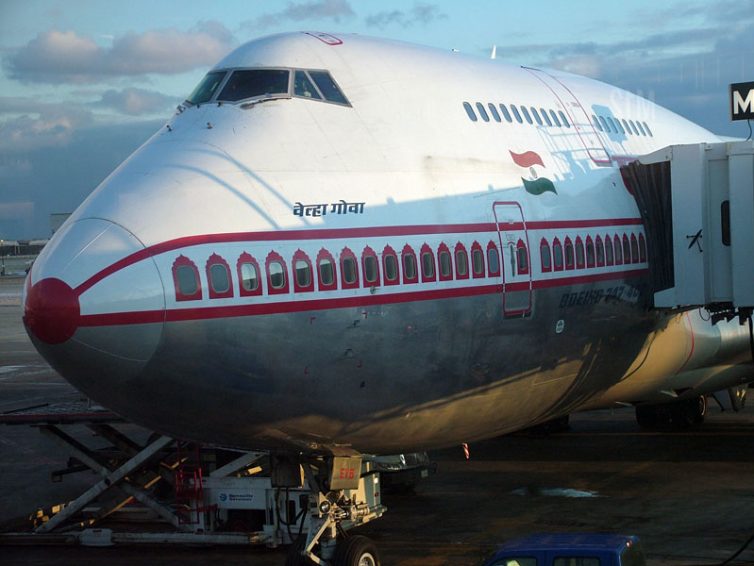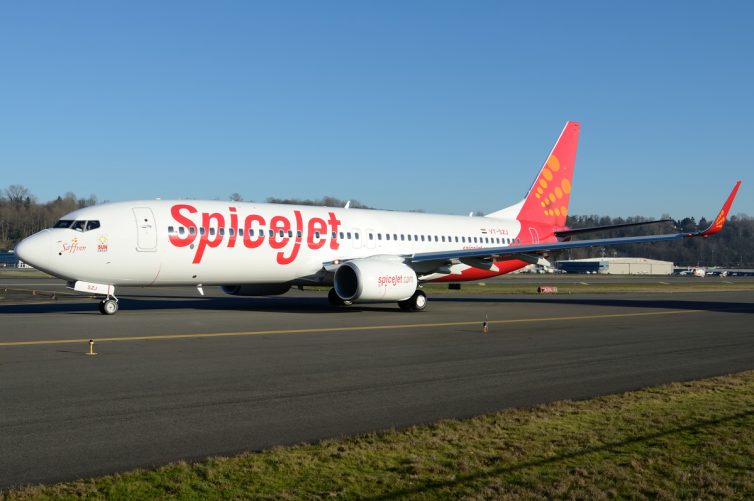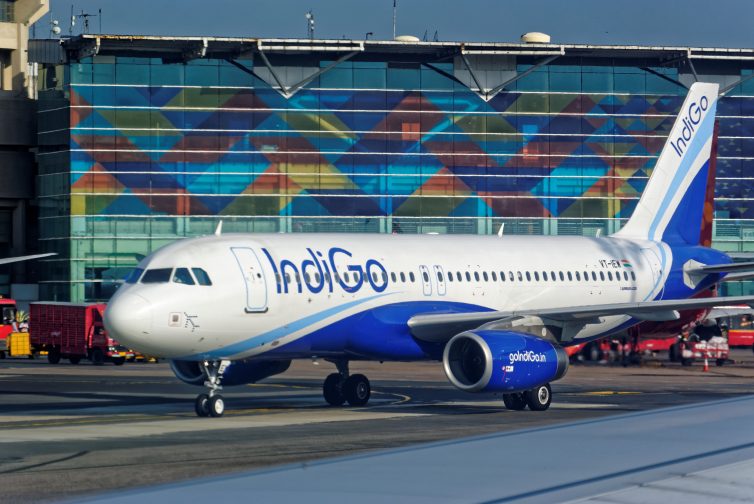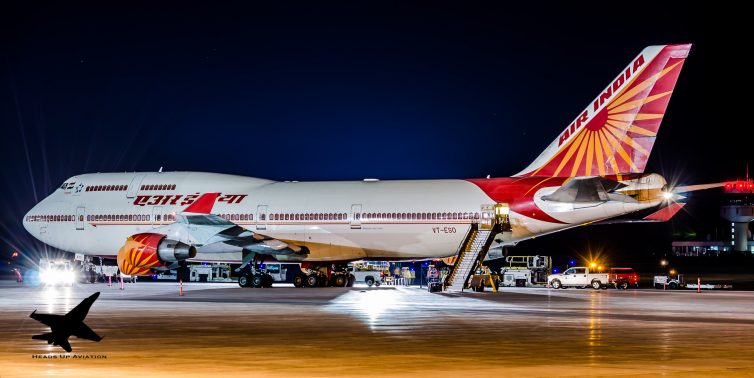
An Air India Boeing 747 – Photo: JB | FlickrCC
As a six-year-old kid growing in a tier-2 city in India back in the 90s, the only modes of transportation I was familiar with were trains and buses. Flying was a distant dream, primarily because we had no airport and because flying back then was an expensive luxury only a few could afford.
Fast forward twenty years and there are at least a dozen international airports in India with virtually every important city connected by a domestic airline route. Flights are affordable, perhaps even equivalent to the A/C sleeper coaches on trains. Thanks to the emerging low-cost airlines, the likes of Indigo, Go Air, Air Asia, Spicejet, and more, flying today in India is no more seen as a mark of status that it once was. It has become more of a way for the masses to travel within and out of the world’s second-most-populous country. But will the young folks flying for the first time today be able to fall in love with aviation as I did in my childhood? Or will they just see it as a basic form of transportation?

Spicejet Boeing 737 – Photo: Andrew W. Sieber | FlickrCC
As an aviation enthusiast, someone who was so mesmerized by the roaring engines and beautiful aerodynamic bodies that he decided to graduate in Aerospace, I have always had a love-hate relationship with low-cost airlines. On more than one occasion, I have tried to poke my brain into thinking why. The answer always seems to be that the premium-ness of flying has gone away with budget airlines coming in.
Growing up, flying was a royal feeling. One aptly portrayed by the Maharaja figurine of Air India — the national carrier of my country. While tickets are cheaper today and more people can fly, it has made the airlines reach down to the bottom of their economic sheets to stay competitive and build a wider customer base.
This is not to say that services are poor or the planes are bad, but there is a strong element of cost cutting involved. To maintain unit economics and provide affordable tickets, airlines have scheduled as many flights as possible in a day which causes frequent delays. Here are just some grievances from my recent travels on some of the budget airlines in India.

Indigo Airbus A320 – Photo: Nadir Hashmi | FlickrCC
AIRLINE CHECK-IN
Check-ins are all about making money. A few low-cost airlines today allow you to check in 48 hours before your flight, but what good is checking in if you are only offered middle seats? Often, the likes of Indigo and Go Air allow you to pick the middle seats for free while the ones on the aisles or window are paid. The only exception to the rule are seat numbers 27 to 30 in a 30-row Airbus A320. If you are traveling with a friend or a colleague, there is absolutely no way the two of you can check in and sit together without paying for a seat, unless you are able to get one of those absolute last rows. While checking in, the seat costs vary upon where you want to sit.
Will purchasing your seat become the norm? Like food and bag space has today? But what this norm will take away is that joy, that rush to check in exactly 48 hours before the flight so you can grab seat number 19F and enjoy the view of the folding flaps, without being charged a dime. Maybe I am too much of an aero-romantic nerd.
%CODE1%
PLANES IN BAD SHAPE
I have been on more than one flight in the last month or so where the seats have been torn or the armrests have been damaged. As someone who worked for Air India in the maintenance division, I well understand the challenges of turning a plane back to prevent delays and therefore little things, especially in the interior, can be let go.
But what if the window shades are defective? Or the armrest is just not there? Or even worse, the emergency exit level cover is pasted with tape? Yes, you guessed it right’¦ the plane still takes the journey because the route crunch that low-cost airlines face is just tremendous.
General cleanliness has never been the bragging point for us Indians, but call it the beauty of retrospection. A few years ago, planes were clean, well maintained and kept well. They did not have great IFEs or mood lighting, but flying made you feel good ’“ almost proud.
%CODE2%
ADVERTISING ON-BOARD
I was on a Go Air flight recently and maybe it skipped my sight earlier when this became a common practice, but on this one flight, the overhead luggage bins featured these ugly posters advertising a water purifier brand. For a split second, I thought I was sitting in a local Delhi metro. As a marketer myself, I have done work with airlines on advertising, but we always restricted ourselves to magazine ads, baggage tag ads, perhaps boarding passes, and this placement took me by surprise. Not only did it look tacky, it ruined the gorgeous interior of the plane. Yes, every penny is important, but what next? Will the interiors also be branded? Will the flight attendants wear uniforms with sponsored logos? There must be a line drawn, but where?

An Air India Boeing 747-400 – Photo: Heads Up Aviation | FlickrCC
THE ROMANCE OF FLYING
These were just three instances, there are many more. Just imagine, a seven-year-old young boy traveling and experiencing these things, for him this will be a norm, the new standard if you may. He will not remember the clean, beautiful, white plane, bang on-time with courteous staff, and handsome pilot. He might not aspire to be one among these folks in the uniform. For him, this will be the new yardstick of measurement.
I am not arguing keeping a plane clean or maintaining it well would ensure more people would fall in love with aircraft or even the idea of flying. However, they make a difference and leave a mark.
Today, while flying has become so affordable, and a lot of credit for that must go to the low-cost airlines, we have paid a price for it. For a romantic, this price is slightly heavier than for a regular passenger. For many, planes are just a quicker (and now cheaper) way to get from one place to another. We have sold away that immaculate feeling of standing out, that feeling of being special, while opening the doors of accessibility. It is only a good thing, but I hope we can find a balance, just the right balance between being affordable and being aspirational. As airlines around the world race to the bottom, I hope some will remain up top, so we can remember what flying used to be like.
This story was written by Arpit Verma for AirlineReporter. Arpit is an aviation enthusiast who also happens to be working in the field of renewable energy, handling marketing for MYSUN. A massive Man Utd fan, he holds his graduate degree in Aerospace Engineering.
Not every restaurant needs to be Morton’s, McGrath’s and McDonald’s simultaneously. All industries have their high-end and low-end products. Let the “price-conscious” (let’s call them what they are: cheap) travelers have their airborne fast food service with the Allegiants and Spirits of the world, while everyone else flies with the caliber of travel they desire and can afford to with the mainline carriers. One size and one price certainly doesn’t need to fit all.
Hi Edgar,
Absolutely agree on the same with you and you are absolutely right that one shoe fits all will never be the scenario especially in a space like travel that has to cater and excite such a wide base of population. In fact, I have categorically written about the same in the write-up too. Thanks for taking the time to read and sharing your views.
-Arpit
Sadly, the main line carriers are following the ULLC ever move until race to the bottom is over. Even the big 3 in the middle are pulling back and starting to look like legacy carriers circa 1995. The romance of flying has turned to misery (think 50% of maariage for context.)
Agreed. There’s a race to the bottom on in the airline sector, and I’m not sure it’s good for the industry.
All companies now have determined they will do just enough to not make people sick or injure them intentionally with their products. That’s the limit of their investment. Profit is the driving motive. They don’t care how people feel about their experience. Airplanes are cattle cars with wings.
Very good summary of the state of affairs in the airline industry these days. It is interesting to see that legacy carriers are looking more like the LCC airlines. In Canada, Westjet brands itself as a low cost carrier (presumably in comparison to Air Canada), yet apart for ACs Business Class, there is absolutely no difference in the product for those flying Economy. Everything in the back is “a la carte” pricing, to use AC’s language! Either AC is becoming more of a Low Cost carrier or WS is moving into legacy territory.
LCCs and ULCCs? Tried both types, from several nations. The saving are not that great, the services are horrible – or worse and I’ll PASS on further attempts. The hardships and nickel & dime routines are more than I will put up with.
I agree with everything Arpit says. Unfortunately even mainline carriers on domestic U.S. routes act more like “one size fits all” budget carriers. I only fly first class and pay a substantial premium to do so. But the seats are now are smaller and closer together, meals are skimpy, and in flight service abysmal. Domestic U.S. first class service is not worth the extra cost … but … it still beats being in the back of the bus
I fly Southwest as often as I am able. No hidden fees. Blame the decline of service on the Big 3, with a fee for this and a fee for that.